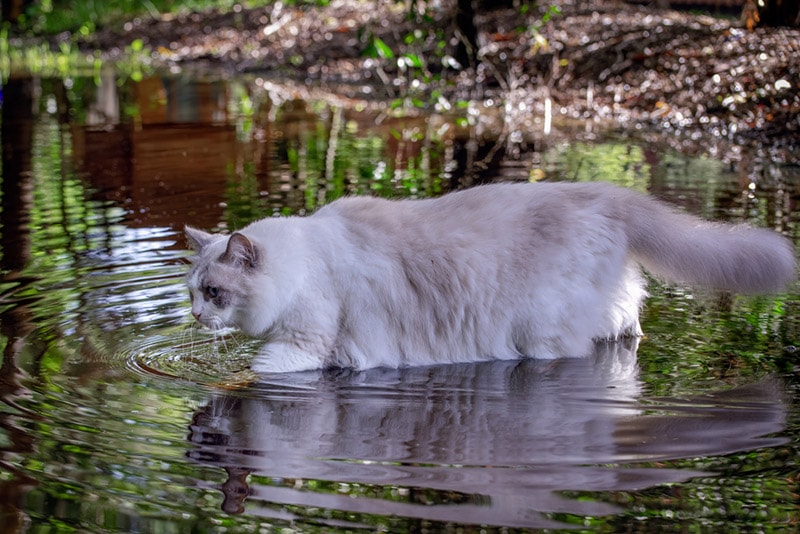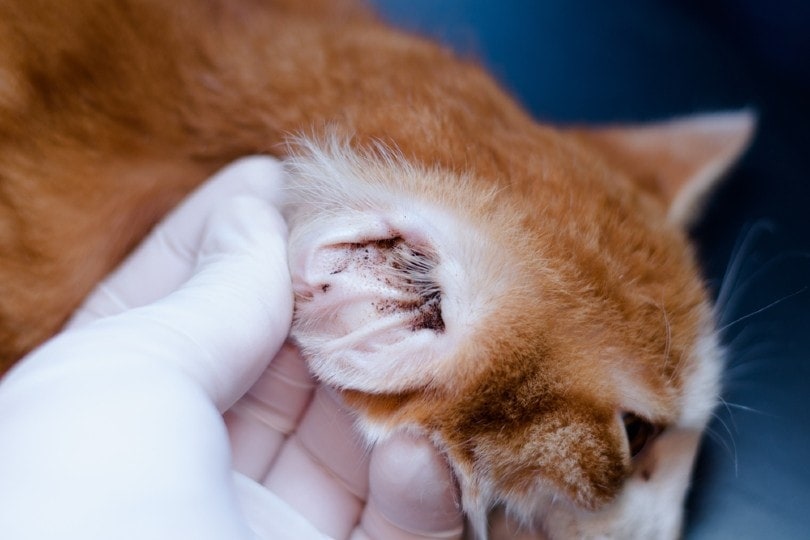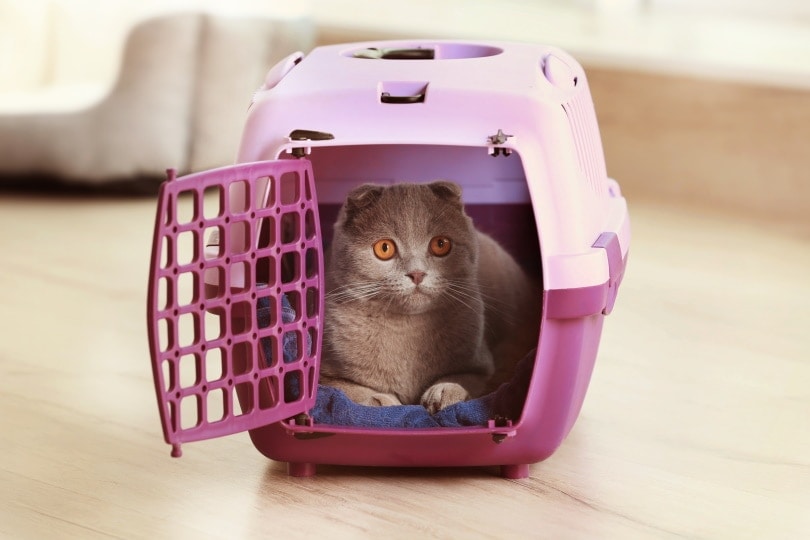Pixie-Bob Cat: Info, Pictures, Characteristics & Facts
By Kit Copson
Updated on
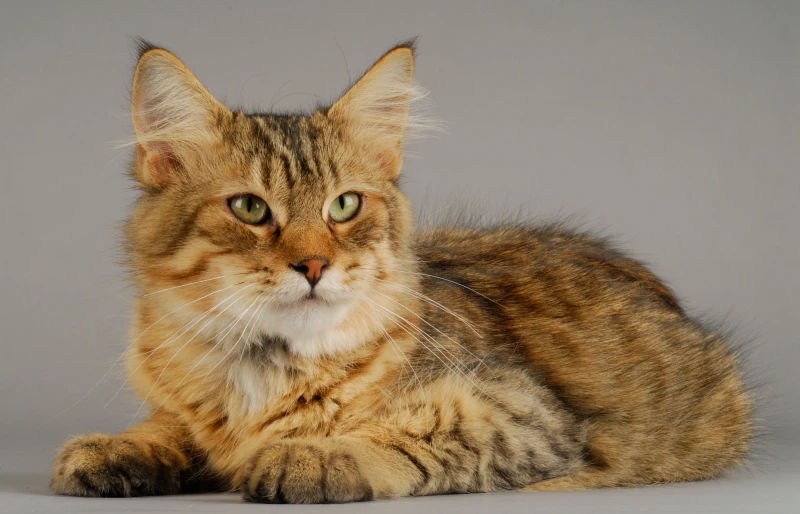
| Height: | 12 – 13 inches |
| Weight: | 8 – 17 pounds |
| Lifespan: | 13 – 15 years |
| Colors: | Brown, gray, orange, fawn, tan—color types include pointed, dilute, and melanistic |
| Suitable for: | Families with children, families with pets, single people, couples—any loving home! |
| Temperament: | Calm, affectionate, friendly, clever, sociable, active |
With their lynx-like ears, bobbed tails, and large size, you’d be forgiven for believing the Pixie-bob to have descended from wild cats. According to legend, the Pixie-bob is the product of an actual bobcat and a standard moggy, but DNA testing has disproven this theory.1
Though the story of the Pixie-bob’s origins is less thrilling than some may have hoped, this is a cat breed that’s far from average. If you’re considering adopting one of these sweet-natured cats, this post shares all you need to know about the extraordinary Pixie-bob.
Pixie-Bob Cats
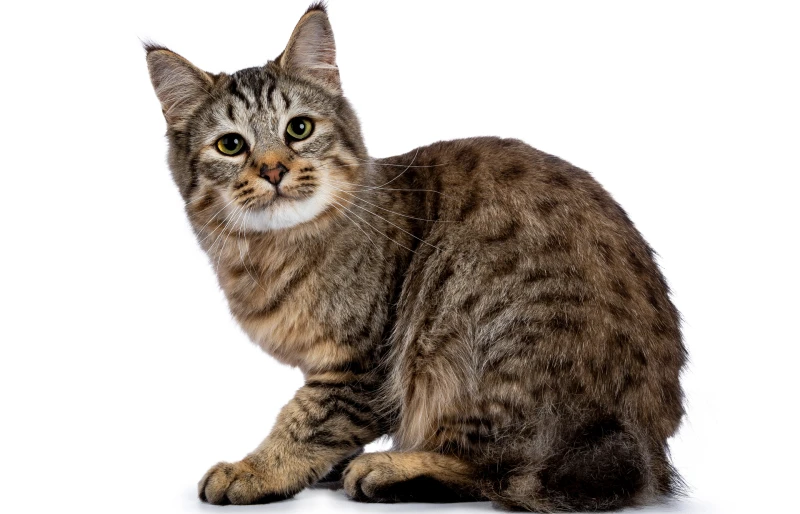
When purchasing through a breeder, ensure you’re going with a reputable one who has performed necessary health screenings.
The best alternative, of course, is adoption. Pixie-bobs are not the most commonly found breed in shelters, but it does happen from time to time and when it does, they’re likely to be adopted pretty quickly. Adoption is a much cheaper method of acquiring one of these lovely cats—most shelters ask for a fee or donation.
Social media groups and rescue sites are a great way to keep an eye out for if a Pixie-bob is ever in need of a loving new home. There are even some sites out there dedicated to Pixie-bob rescues, so have a look around!
3 Little-Known Facts About the Pixie-Bob
1. Pixie-bobs were bred to look like bobcats.
Though DNA testing has scuppered claims that Pixie-bobs descend from wild bobcats, they were indeed selected and bred to look like them. Carol Ann Brewer was responsible for breeding the first Pixie-bobs—she mated her large rescue male cat with a spotted female, which produced a kitten she named “Pixie” and who later became the foundation stock for Brewer’s Pixie-bob breeding program.
2. Pixie-bobs have a reputation for being chatterboxes.
Pixie-bobs aren’t big meowers—instead, they tend to communicate with chirps, chatters, and trills. If you get a Pixie-bob, don’t be surprised if they want to question you at length about every aspect of your day!
3. Pixie-bobs can have up to seven toes on each foot.
Pixie-bobs are polydactyls, meaning some have superfluous toes. The breed standard allows for a maximum of seven toes per foot.
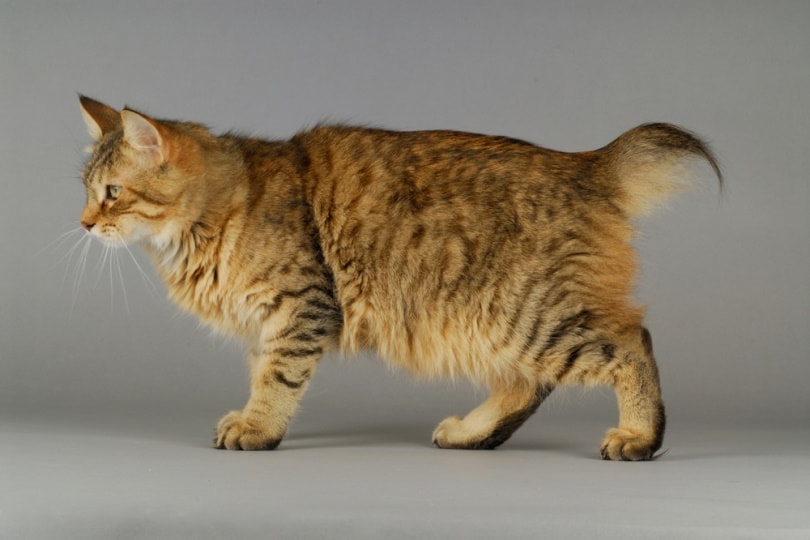
Temperament & Intelligence of the Pixie-Bob
Pixie-bobs are the ultimate triple-threat—they’ve got beauty, brains, and an awesome personality to boot. Highly intelligent and active, the Pixie-bob loves playing with their people and appreciates both mentally-stimulating, interactive toys and simple games like fetching and chasing. They need this kind of interaction to stay happy and healthy but are less likely than some breeds to become destructive when bored.
Pixie-bobs are also famed for how easygoing they are. Easily pleased, they’re just as happy hanging out on their human’s lap or simply being around them as they are adventuring and exploring. Pixie-bobs are the ultimate people cats, so if you’re considering adopting one, be sure to consider whether you’ll have the time to give back all the love and affection they’re sure to give to you.
Are These Cats Good for Families? 👪
Pixie-bobs are social, extraverted cats that enjoy spending time with families, including families with children. Providing that children know how to interact respectfully and carefully with the Pixie-bob, they can make fantastic playmates for kids. Pixie-bobs are generally peaceful, patient cats by nature and will enjoy the extra attention and cuddles.
Does This Breed Get Along with Other Pets?
As with any breed, this varies depending on your cat’s and other pet’s personalities. An easygoing breed, the Pixie-bob shouldn’t have too many issues adapting to a home with other cats or patient, non-aggressive dogs and may even buddy up with them!
In terms of smaller pets like rodents, it could either be a great match or a terrible one depending on your cat. Pixie-bobs are super chill but still have the standard feline instincts, so there’s no guarantee your hamsters, rats, or mice would be safe around them.
Some cats are friendly towards rodents—especially if they’ve grown up alongside them—but there’s always a risk involved in introducing cats to smaller fluffies.

Things to Know When Owning a Pixie-bob:
Food & Diet Requirements
The dietary requirements of Pixie-bobs are the same as those of other cat breeds. As obligate carnivores, Pixie-bobs need a meat-based diet to stay healthy. The best way to provide this is to feed a commercial cat food formulated by a reputable, high-quality brand. Commercial cat foods typically consist of meat-based proteins, carbohydrates, amino acids, fiber, and fats.
Feeding options include wet food, dry food, or a combination of both. One thing to be aware of with Pixie-bobs is that they can be susceptible to obesity, so it’s important to monitor their food intake. Keep clean, fresh water on hand at all times to keep your kitty hydrated.
Exercise 🐈
The Pixie-bob is an undemanding yet active breed and, as such, needs exercise to stay healthy both physically and mentally. Exercise is especially important for Pixie-bobs due to their susceptibility to obesity, so it’s recommended to set some time aside every day to get your Pixie-bob moving. Provide mentally stimulating toys if you’re going to be out of the house for a while in case your Pixie-bob needs to expend some energy.
Cat trees are another great tool for keeping your Pixie-bob entertained when you’re not around, especially when placed next to a window. The great thing about Pixie-bobs is that they tend to stick closely to their humans and so will work out their energy in a variety of ways, whether that’s during a play session or following their human here, there, and everywhere.

Training 🧶
Good news—the Pixie-bob is a highly trainable breed. For one thing, they’re reputed to tolerate wearing a leash quite well as they enjoy adventuring and exploring. Their high intelligence also makes it unlikely that they’ll struggle with litterbox training. Reward your Pixie-bob with lots of praise and perhaps a treat when they use the box correctly to encourage them to keep doing it.
Grooming ✂️
Most Pixie-bobs are short-haired, but there is a long-haired variety. Long-haired Pixie-bobs will need to be brushed around three times per week to keep shedding under control and prevent clumping and matting. This shouldn’t cause your Pixie-bob much stress—they put a lot of trust in their humans and will likely enjoy being pampered! For short-haired Pixie-bobs, a weekly brushing should be just the ticket.
Health and Conditions 🏥
Pixie-bobs are a generally healthy breed with a decent lifespan. That said, there are a few health conditions they are susceptible to, so it’s a good idea to be vigilant. These include:
- Vaccine sensitivity
- Obesity
- Dystocia
- Cryptorchidism
- Feline cardiomyopathy
- Obesity: As a larger cat breed, Pixie-bobs are a little more prone to piling on the pounds. It’s important to keep their weight in check by feeding them appropriate portion sizes. This will differ depending on your cat’s size, so refer to your brand’s feeding guide or ask a vet for advice.
- Dystocia: Dystocia means experiencing difficulties in birthing. The condition has been linked to Pixie-bobs.
- Cryptorchidism: Male cats with this condition have testes that do not descend into the scrotum as normal at around 2–4 months old.
- Feline Cardiomyopathy: A cardiac condition in which the heart’s muscular walls are thicker than usual. This causes the heart to function abnormally.
- Vaccine sensitivity: Some cats suffer allergic reactions to vaccines, though this is uncommon. Pixie-bobs have been linked to vaccine sensitivity.
Male vs Female
The main differences between male and female Pixie-bobs are their size and behavior when unneutered or unspayed. In terms of weight, males are around 11–15 lbs, whereas females are a little lighter at around 8–12 lbs. Unneutered males can be more prone to aggressive behavior with other cats in the household and spraying to mark their territory.
On the other hand, unspayed females tend to become extremely affectionate and may arch their backs or rub up against objects. These behaviors are common in all cat breeds, though, not just Pixie-bobs. These behaviors usually calm down once the cat has been neutered or spayed.
Other than that, there are no major differences between male and female Pixie-bobs. Personality comes down to genetics and how your cat has been socialized rather than gender-specific factors. Both male and female Pixie-bobs can be excellent companions.
Final Thoughts
Whether you’re already the proud parent of a Pixie-bob or potentially a future one, we hope you’ve found our article on this wonderful breed useful and informative. If you’re still on the fence about inviting a Pixie-bob into your home, one thing’s for sure—if you do, you’ll be bringing home a very faithful, devoted, and true friend for life!
Featured Image Credit: COULANGES, Shutterstock



